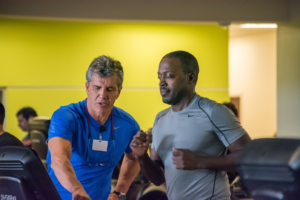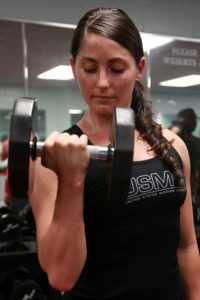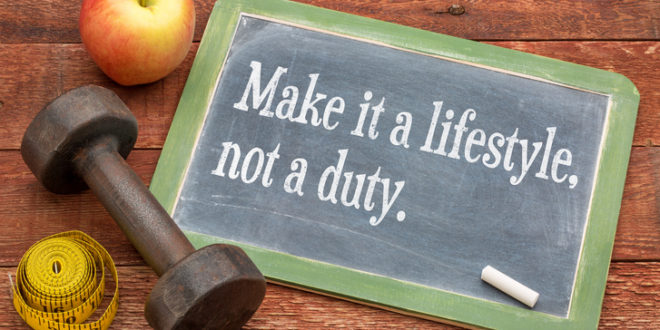by Michelle Sutton-Kerchner
Avoid extremes to accomplish your ideals …
When it comes to the good things in life, we often think more is better. More love, friendship, smiles, fun, and peace. However, this is the real world, not a preschool show. Things we typically pursue in excess sometimes lead to unhealthy scenarios.
Each of us has overdone it at some point, including when it comes to healthy endeavors. Think of the all-or-nothing approach that led to repulsion over cruciferous vegetables or resulted in a trick knee. It’s best to remember the wise adage: All things in moderation.
Anyone who practices a healthy lifestyle quickly notices improvement in their quality-of-life. These benefits are a motivating force. They propel us to exercise more, lift heavier, walk further, eat better. Here are some guidelines to prevent good intentions from leading to bad results.
Know Your Limits (Really)

Depending on your current mindset and latest fitness goals, your perception of what you can achieve may shift. A fast five-pound weight loss may inspire you to double your treadmill time or maximize the machine’s incline setting. Instead of shedding more weight or gaining more muscle and stamina, you could end up tired, sore, and discouraged.
The Fix: Pace yourself. Extreme workouts don’t equate to extreme results. Pushing yourself too hard for extended periods doesn’t allow proper time for rest and recovery. You become more susceptible to injuries and negatively impact bones, muscles, and tissue. Take a day or two off. Your workout stimulates the body to grow stronger. Rest provides the time and setting for this to happen. You’ll return to your fitness program stronger.
Know When to Push
When starting a new or different fitness regimen, you can expect some post-workout soreness and fatigue. Even bodybuilders and avid athletes occasionally experience this. This does not merit a stint on the couch, regardless of how tempting.

The Fix: Do not avoid exercise until soreness subsides and energy returns. Keep to your fitness schedule with a modified workout. Go lighter, with decreased resistance training and duration. Work muscles and energize your cardiovascular system using low-intensity exercises. Movement will loosen tightness and ease aches while regaining stamina. Both of which are probably main reasons you began exercising in the first place.
Helpful Tip: Too much or too little oomph in your workout is best determined by fitness professionals. Personal trainers can provide expert insight on whether your limitations are perceived or realistic.
Then, you can safely challenge yourself. With support and guidance, you often can reach beyond your expectations and still remain within safe boundaries. Personal trainers also can help differentiate between normal muscle soreness and pain that signifies incorrect movements or form.
Know When to Be Flexible
Studies prove a commitment to exercise is more readily honored when the mind feels in control. Avoid speaking/thinking in extremes– “I must go to the Center tonight.” “I cannot miss Cardio Kick class.” “I can’t enjoy my father’s birthday cake.”

The Fix: Allow yourself flexibility. Plan to hit the Fitness Floor on your way home. Work toward this goal. Decide on a Group Fitness class that is convenient to your schedule. Make an appointment with a trainer. These are positive ways to remain accountable, which work better than feeling restricted.
Exercisers who give themselves leeway manage to work out more than those with rigid expectations and requirements. And, good grief—Don’t insult celebrating friends and family by punishing yourself with a “no sweets ever” rule. Let yourself eat cake! (Occasionally.)
Know When to Lift Weights

Every balanced fitness routine should include strength training. Incorporating weights and other resistance equipment sculpts muscle. The work accomplished on the Fitness Floor enhances all other elements of your workout. Beyond muscle power, weightlifting builds your bones and helps cognitive functioning.
Strength training also jumpstarts your caloric-burn capabilities. Muscle burns calories more quickly than fat, even at rest.
The Fix: Be sure your fitness program contains the essentials: cardio training, balance work, stretching, and strengthening. Alternate days to avoid overdoing any one element. For example, focus one day on cardio and the next on dumbbells. Ask a trainer how to best use weights to accomplish your unique fitness goals.
In the Know
Now you’re in the know. Healthy habits should enhance your life. They should balance and improve your well-being, not add stress to your physical and mental self through extremes. Advice is available at the touch of a keyboard, telling us the “musts” and “don’ts” of fitness. Take what you learn and adapt it to work for your body, mind, and life.
Image Credits
Desserts: pixabay.com/en/cake-cake-cuts-puff-pastry-2295613
Weightlifting: pixabay.com/en/weights-lifting-power-female-gym-652484
 Fitness & Wellness News Your Source for Fitness News, Wellness News, Health News, and Nutrition News!
Fitness & Wellness News Your Source for Fitness News, Wellness News, Health News, and Nutrition News!




